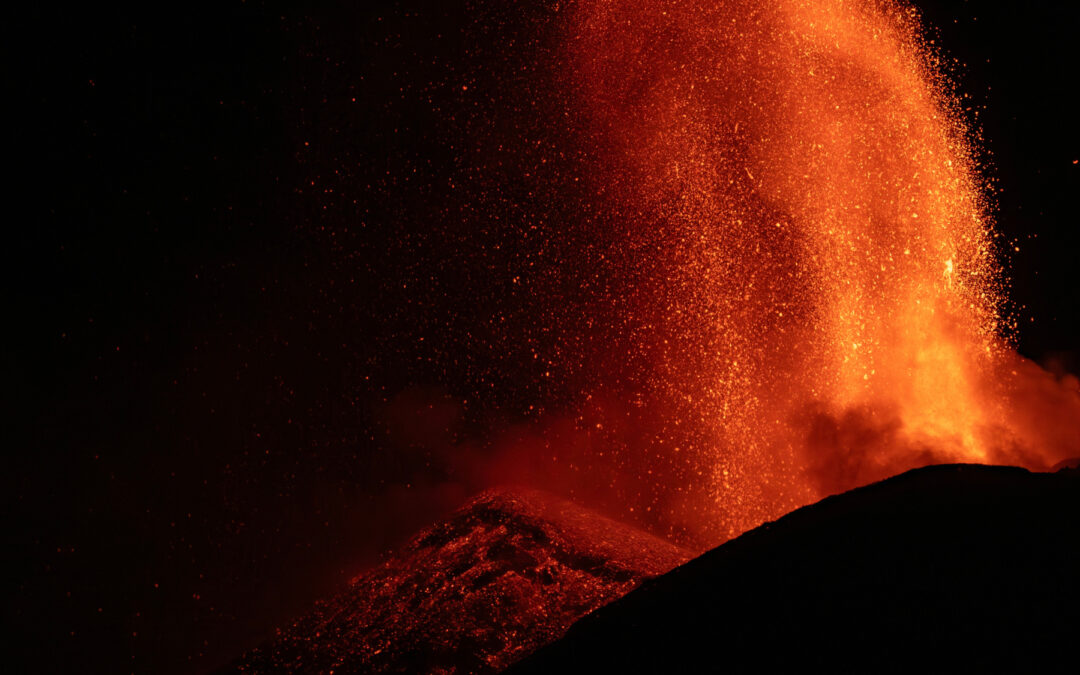On the afternoon of 13 August 2023, the measuring instruments of the Institute of Geophysics and Volcanology in Catania (INGV) register the first signs of a new eruption of Etna, which begins shortly afterwards – with Strombolian activity.
Strombolian activity, typical of Stromboli volcano, is characterised by the emission of lava in the form of droplets, wisps and lava bombs, which are ejected from the channel in bursts. Unlike on Stromboli, the strombolian activity on Etna represents only one of the countless phases of a larger eruptive event. It is not for nothing that Etna is a volcano with extremely complex and diverse activity.
News of another eruption of Mount Etna spreads like wildfire among photographers, scientists and onlookers, sending them rushing towards Etna. You too can check out the eruption on our Instagram page: https://www.instagram.com/reel/Cv6zu53IB_9/?igshid=MTc4MmM1YmI2Ng==
How the Etna eruption 13.8.2023 began
[/borlabs-cookie]
The lava overflow starts on the southern flank of the South East Crater and the atmosphere changes: the strombolian activity becomes more consistent, but there is no hint of the lava fountains we have been waiting for. It goes on like this throughout the night until, a few hours before dawn, the lava fountains suddenly erupt and the show begins!
The eruption produces another lava flow between Monte Frumento Supino and the craters of the 2002 eruption, which develops little and overlaps the earlier lava flows. There is no lava flow in the Valle del Bove.
Also of note is a new fissure on the southwestern flank of the Southeast Crater, which is producing a modest lava flow at an elevation of 2700 metres.
Three days later, the signs of eruptive activity have not yet completely disappeared. So we are curious to see what will happen next.
Now all we have to do is wait for the signs of the next eruption, pack our backpacks and equipment and head off to experience the wonders of one of the world’s most active volcanoes.
